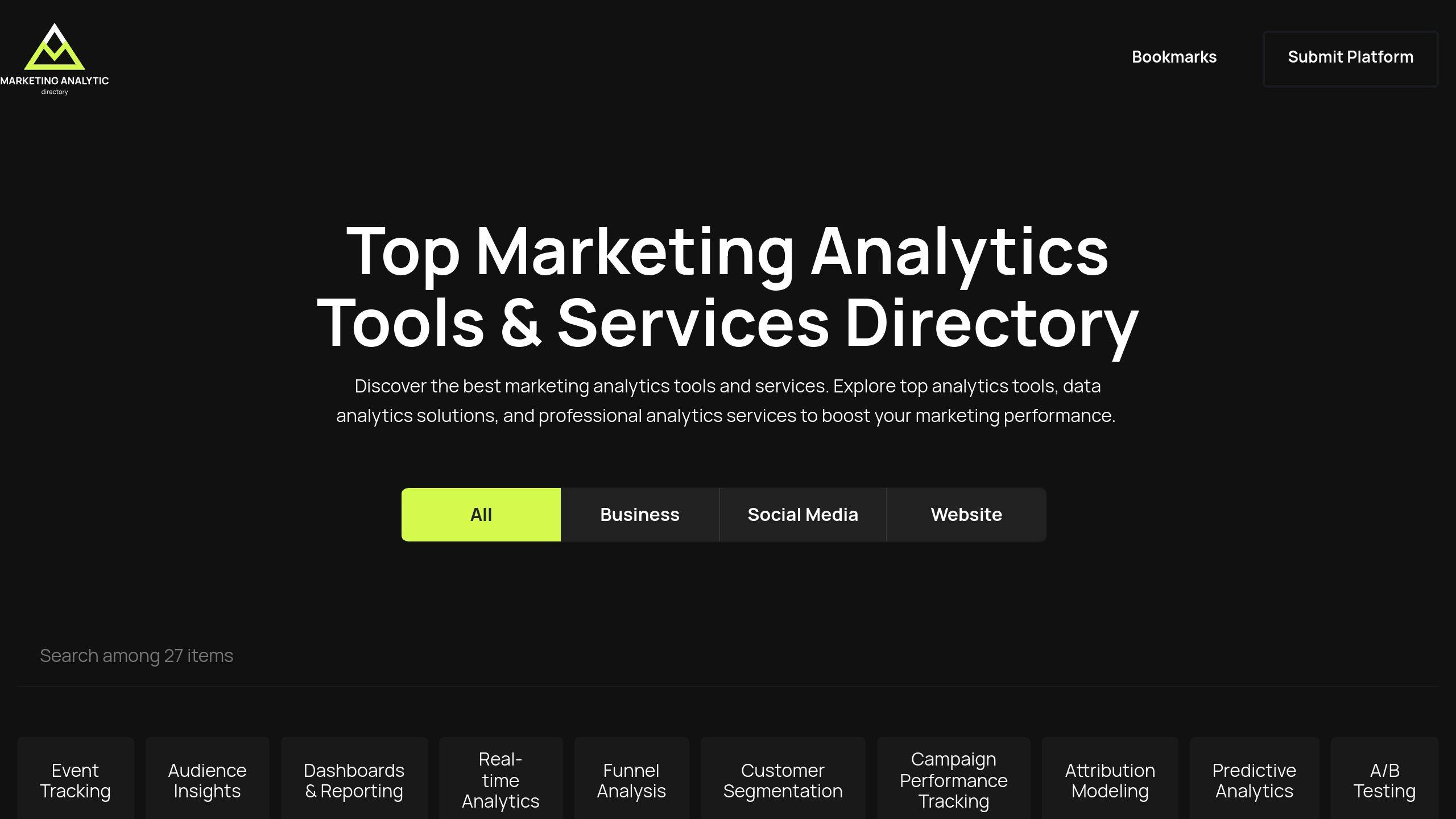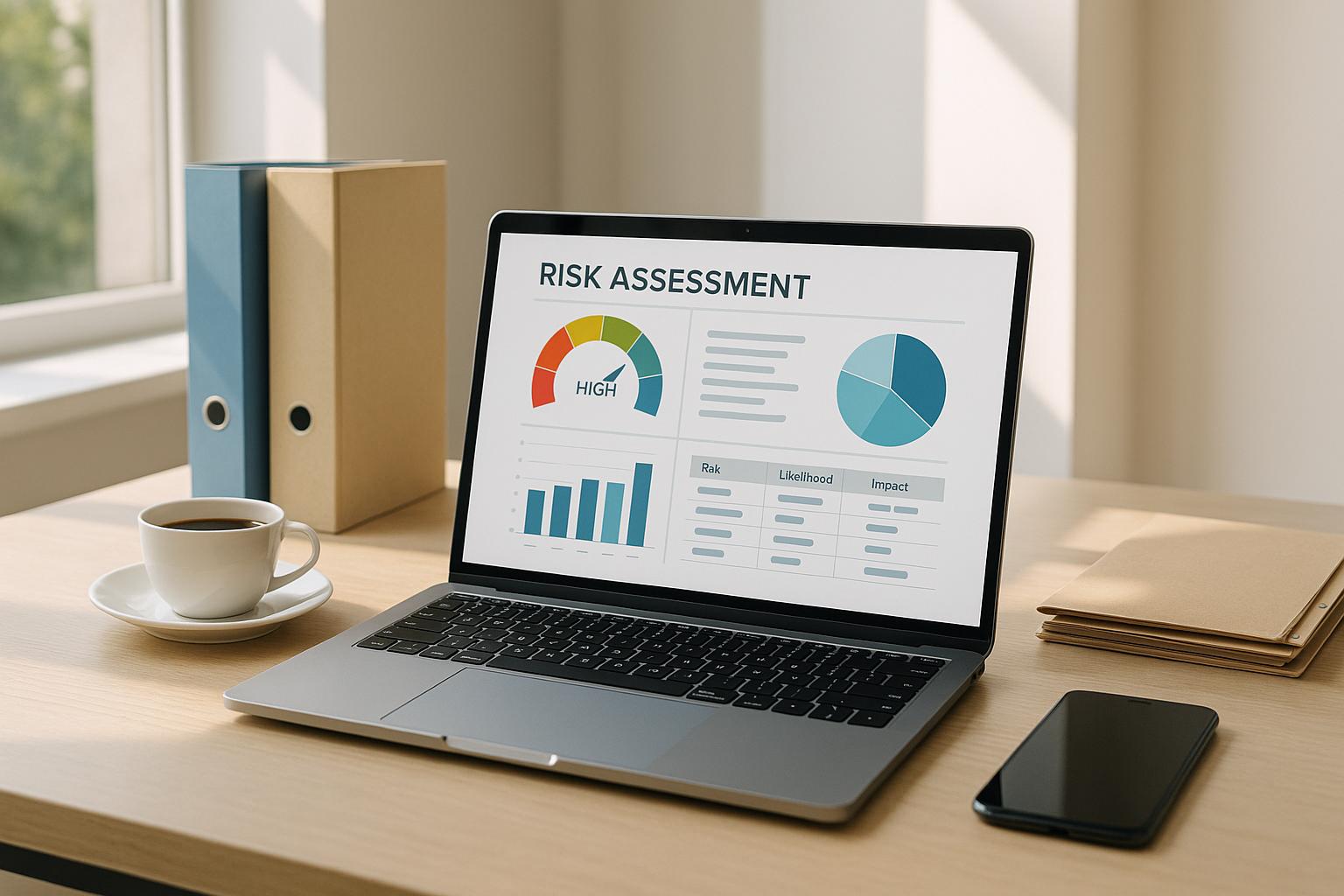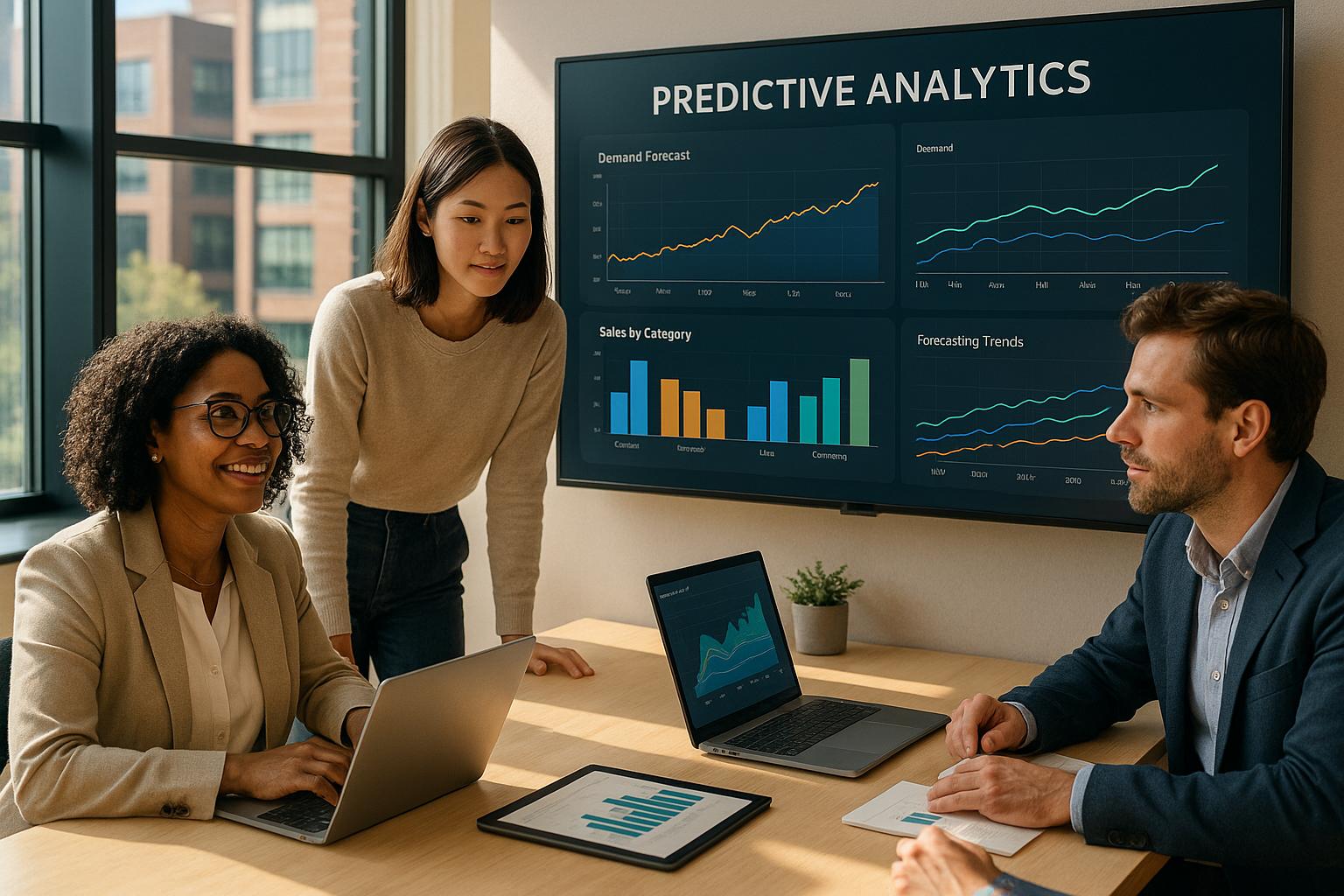Psychographic data helps businesses understand why customers make decisions, not just who they are. By analyzing values, interests, and lifestyles, companies can create more personalized marketing, improve product development, and build stronger customer loyalty. Here’s what integrating psychographic data can do:
- Better Segmentation: Understand motivations and group customers beyond basic demographics.
- Personalized Marketing: Craft messages that align with individual values and behaviors.
- Enhanced Product Development: Design products based on customer lifestyles and emotional needs.
- Higher Loyalty: Build deeper connections through tailored loyalty programs and support.
- Improved Content Marketing: Create content that resonates with core customer motivations.
- Efficient Ad Spending: Focus budgets on high-potential segments using precise targeting.
- Analytics Tools: Leverage AI and predictive tools to extract actionable insights.
This approach transforms marketing from surface-level targeting to strategies that truly connect with customers.
What is Psychographic Segmentation?
1. Better Customer Segmentation
Combining psychographic data with traditional metrics gives businesses a richer, more detailed picture of their audience. While demographics tell you who your customers are, psychographics uncover why they make decisions - highlighting values, lifestyle choices, and buying behaviors[1][2].
This approach goes beyond basic factors like age or income by incorporating insights such as:
- Personal values and beliefs
- Lifestyle habits
- Attitudes toward specific issues
- Shopping motivations
- Decision-making styles[2][3]
Take luxury car buyers, for example. Two customers might share the same income level but have very different priorities - one values status, while the other is drawn to engineering quality. Understanding these nuances allows marketers to tailor messages that connect with each group's unique motivations.
"Shopping for groceries in a physical store has an expectation of discovery while shopping for groceries at the same retailer's e-commerce site comes with an expectation of broad selection and simple comparisons."
AI tools make this process even more powerful by analyzing large-scale behavioral data to uncover actionable patterns. These tools can identify trends and group customers into meaningful segments faster than ever before[4].
To make this work, businesses need to collect data systematically through surveys, social media monitoring, and other methods. Regular updates are essential to keep these insights relevant over time.
2. More Personalized Marketing
Psychographic data takes marketing to a whole new level by turning generic campaigns into tailored experiences that connect with customers emotionally. By blending psychological insights with traditional data, businesses can craft messages that align with their audience’s core values and motivations.
AI-powered analytics make this possible by processing psychographic data in real-time. This allows marketers to create campaigns that adjust dynamically to individual preferences. AI tools can uncover subtle patterns in consumer behavior that might otherwise be missed, paving the way for more precise targeting strategies[4].
The Marketing Analytics Tools Directory offers a range of solutions to help businesses implement these advanced personalization techniques, covering everything from data collection to campaign execution.
Here’s how psychographic-enhanced personalization stands apart from traditional methods:
| Personalization Aspect | Traditional Approach | Psychographic-Enhanced Approach |
|---|---|---|
| Message Content | Based on demographics and purchase history | Tailored to values, lifestyle choices, and personal aspirations |
| Channel Selection | Determined by general usage statistics | Aligned with individual communication preferences and habits |
| Timing | Based on industry standards | Customized to personal routines and behavior patterns |
| Offer Types | Generic discounts and promotions | Offers that align with personal motivations |
To get the most out of this approach, businesses should focus on the following:
- Monitor customer interactions across multiple channels.
- Update profiles every quarter to ensure accuracy.
- Use A/B testing to refine value-driven messaging.
- Predict future needs by analyzing behavioral trends[4].
By integrating psychographic data, businesses can create campaigns that go beyond transactional relationships. These strategies build genuine connections based on shared values and aspirations, leading to higher engagement and more meaningful customer interactions[3].
This level of personalization doesn't just enhance engagement - it strengthens customer loyalty, setting the stage for the next major advantage.
3. Enhanced Product Development
By tapping into customers' core values and lifestyle choices, businesses can design products that truly connect with their audience[2].
Using psychographic insights offers several benefits, such as:
- Shifting feature priorities from general market trends to aligning with customer values
- Making design decisions based on lifestyle habits rather than just aesthetics
- Setting prices based on perceived emotional value instead of purely benchmarking competitors
Understanding specific behaviors - like eco-friendly preferences, hobby-driven purchases, or status-oriented choices - provides deeper insight into not just what customers buy, but why they make those decisions[2].
With the ability to process large amounts of psychographic data, businesses can spot new trends and predict customer needs before they fully emerge[4].
Specialized analytics tools make this process easier by linking product feedback with psychographic trends. These platforms help businesses:
- Track evolving customer preferences
- Detect patterns in purchasing behaviors
- Evaluate how well product features resonate with customers
- Ensure alignment between products and core customer values
By combining psychographic and behavioral data, companies can uncover overlooked needs that shape their product development plans[1][2].
This customer-focused strategy not only strengthens loyalty but also ensures products address emotional and unspoken desires.
4. Higher Customer Loyalty
Integrated psychographics go beyond just improving products - they help build strong, lasting relationships between brands and their customers. By tapping into the hyper-personalized marketing strategies mentioned earlier, businesses can create emotional connections that turn one-time buyers into loyal supporters.
Psychographics help businesses:
- Design loyalty programs that align with customers' values and interests
- Offer personalized customer support tailored to individual needs
- Craft retention strategies that fit customers' lifestyles
"Greater understanding of your audience in any given context through their experience always improves your ability to increase the impact you can deliver for your customer." - Elston [3]
To strengthen customer loyalty using psychographic data, businesses can focus on these key steps:
- Gather psychographic insights through surveys, social media monitoring, and loyalty trends.
- Use these insights to personalize communications and rewards.
- Regularly adjust strategies based on retention data and customer feedback.
Tools like the Marketing Analytics Tools Directory can help track and analyze customer behavior, enabling smarter decisions about loyalty programs.
These efforts not only boost customer loyalty but also lead to higher engagement, setting the stage for improved content strategies in the next section.
sbb-itb-5174ba0
5. Improved Content Marketing
Building on the loyalty benefits discussed earlier, psychographic insights can take content strategies to a whole new level. By focusing on audience values and core motivations, brands can go beyond basic demographic targeting to create content that truly connects with their audience. This approach not only strengthens engagement but also boosts the effectiveness of advertising efforts.
To make the most of psychographic insights in content marketing, businesses should prioritize two key strategies:
-
Content Personalization
By leveraging audience data, companies can craft content that speaks directly to specific interests and motivations. This ensures every piece of content feels relevant and meaningful to its target audience. -
Performance Tracking
Monitoring the right metrics is essential to measure how well your content is performing. Here’s a quick breakdown:Key Metrics What to Measure Engagement Time spent on content, social shares, comments Conversion Impact Click-through rates, lead generation, sales Sentiment Indicators Customer feedback, brand perception, loyalty
This focus on value-driven content sets the stage for the advertising efficiency improvements we'll discuss next.
6. More Efficient Ad Spending
Using psychographic data alongside the content strategies mentioned earlier can make advertising far more effective. By tapping into the motivations and values of your audience, you can cut down on wasted ad spend and see better conversion rates.
Instead of relying only on demographics, psychographic insights allow marketers to craft campaigns that connect deeply with specific groups. In fact, this approach can improve marketing campaign performance by up to 30%[4].
Here’s how psychographic targeting reshapes ad efficiency:
| Aspect | Traditional Targeting | Psychographic-Enhanced Targeting |
|---|---|---|
| Audience Understanding | Focuses on demographics and behavior | Adds values, motivations, and lifestyle data |
| Message Relevance | Broad, generic messaging | Personalized content aligned with values |
| Campaign Focus | Metrics based on reach | Prioritizes engagement and conversions |
| Budget Allocation | Spread across wide audiences | Focused on high-potential segments |
This sharper focus helps allocate budgets more effectively.
"Understanding your customer in psychographic terms isn't just about personalization and segmentation - it's about getting inside your customers' heads and speaking to their hearts."
To make the most of psychographic targeting, consider these three strategies:
- Integrate Data Sources: Use customer feedback, social media, and survey data to develop detailed psychographic profiles. This sets the stage for precise ad targeting.
- Leverage Predictive Analytics: Analyze past behavior to predict how different audiences will engage, helping you allocate your budget wisely.
- Measure Performance: Monitor engagement, conversions, and ROI to confirm the success of your campaigns and fine-tune them further.
For tools to support this approach, the Marketing Analytics Tools Directory offers plenty of options tailored for advanced targeting and campaign optimization. This method not only boosts ROI but also builds stronger connections with your audience.
7. Marketing Analytics Tools Directory

To tap into the power of psychographic data, you need the right tools. The Marketing Analytics Tools Directory highlights platforms designed to turn this data into practical strategies. Here's how these tools help:
| Tool Category | Primary Function | Psychographic Integration Benefit |
|---|---|---|
| Customer Data Platforms | Unified data collection | Combines behavioral and psychographic insights |
| Predictive Analytics | Pattern recognition | Predicts customer preferences and motivations |
| AI-Powered Solutions | Advanced segmentation | Builds detailed psychographic profiles |
| Marketing Automation | Campaign execution | Sends tailored messages based on psychographic data |
"Understanding your customers through psychographic data requires the right tools. The challenge isn't just collecting data – it's making it actionable through proper analysis and integration."
Some standout features and their psychographic uses include:
| Key Features | Psychographic Application |
|---|---|
| Unified Data Platforms | Combine behavioral and values-based data |
| AI Segmentation | Pinpoint motivation patterns |
| Predictive Analytics | Predict lifestyle changes |
Choosing the right tools ensures you can automate profiling, predict trends, and turn raw psychographic insights into targeted strategies. This completes the journey from data collection to effective execution.
Conclusion
Psychographic data, when paired with the right analytics tools, offers a deeper understanding of why customers make decisions. This approach allows businesses to craft marketing campaigns that go beyond surface-level demographic targeting, tapping into the motivations that truly drive customer behavior.
What makes psychographic data so impactful is its ability to influence multiple aspects of a business at once. By uncovering the underlying reasons behind customer choices, companies can better align their products or services with what truly matters to their audience.
To use psychographic data effectively, businesses must prioritize ethical data practices and leverage advanced analytics platforms. Tools powered by AI and predictive analytics continue to improve how we understand and predict customer behavior[4]. As seen in the Marketing Analytics Tools Directory, combining psychographic insights with behavioral and demographic data enables more accurate targeting and meaningful engagement.
The real power of psychographic data comes when it’s treated as part of a broader strategy. By integrating it with other tools and approaches, businesses can create stronger customer connections and achieve measurable results. Those who embrace this integrated approach can deliver personalized, value-driven experiences that lead to long-term success.
FAQs
Why is psychographic data more powerful than demographic data?
Psychographic data gives marketers a deeper understanding of customer behavior by uncovering the reasons behind their actions. Unlike demographic data, which focuses on who customers are, psychographic data explains why they make decisions. It does this by analyzing factors like:
- Values and beliefs
- Lifestyles
- Motivations
- Emotional triggers
This type of data goes beyond surface-level information, offering insights that demographics alone can't provide. For example, while demographics might tell you a customer is a 30-year-old woman, psychographics reveal her preferences, priorities, and what truly drives her choices.
As discussed in our tools analysis (Section 7), collecting and analyzing psychographic data requires a structured approach to uncover these valuable insights [3]. With these insights, businesses can predict behaviors and build stronger, more personalized relationships with their audience [4].


